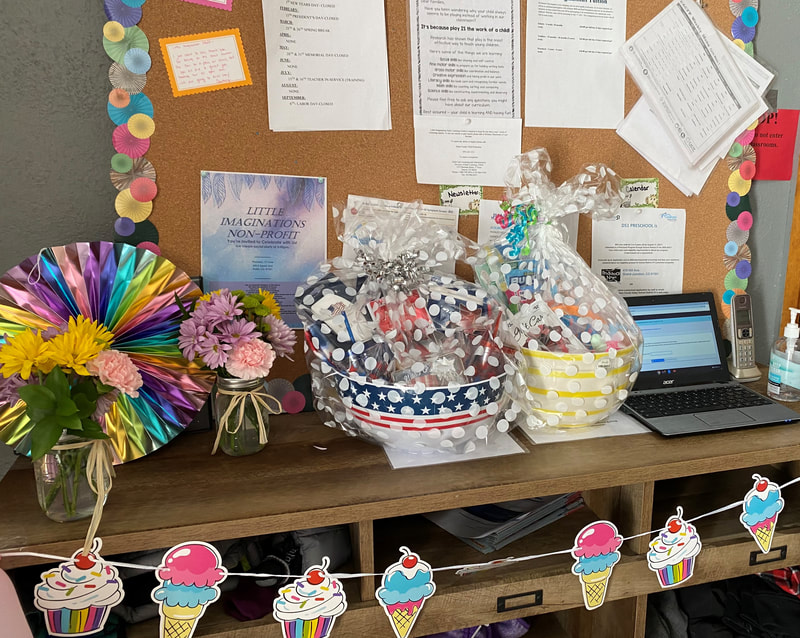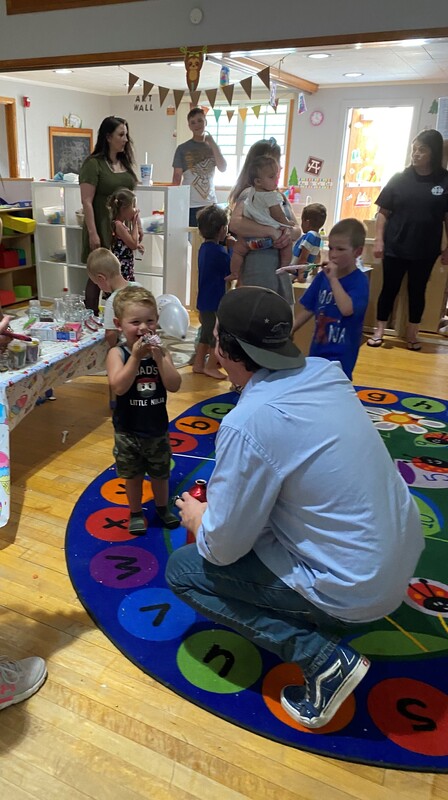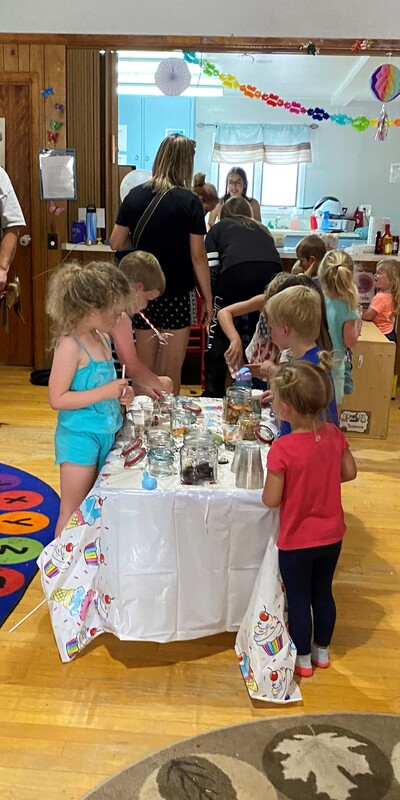 Author: Mandy Potts, Rising Business Consulting, LLC Release Date: February 4, 2022 The state of Colorado HB20B-1002 created two grant programs to support child care providers across the state: the Child Care Relief Grant program and the Emerging and Expanding Child Care Grant Program. This legislation provides $45 million in General Funds to support licensed child care in sustaining and expanding their businesses. Please follow this link for more information on applying for these funds https://www.coloradoofficeofearlychildhood.com/oec/OEC_Resources?p=Resources&s=Child-Care-Relief-Grants&lang=en Now that your organization has applied for the funding and been given an award amount, it should be asking WHAT can we do with this money? What will make the greatest impact? The state of Colorado offers some suggestions such as smaller group sizes, purchasing additional safety and cleaning materials, and covering salaries and compensation to staff that provide child care. These things are great, but there is so much more your organization can do! While keeping compliance in the forefront of any spending plans (always ask is the expenditure reasonable, necessary, and allocable), we need to think strategically about these funds and make sure the funds SUPPLEMENT NOT SUPPLANT (OMB Circular A-133 Compliance). Here are a few things nuggets to help your organization think bigger: Everything needs to “tie to COVID” YES AND… All spending needs to be in response to the pandemic. Carefully document how each expenditure links to COVID-19. Yes AND… how does this expenditure achieve the goals of creating a safe and healthy environment for children, families, and staff right now! Staff retention We all know that the child care industry is experiencing a massive shortage of qualified staff. While it is tempting to double staff salaries as an immediate fix (we all agree they deserve it), we must layer-in sustainability. Can your organization afford to pay these inflated wages once the stability funding ends in 2023? Most likely not... And furthermore, it is not always about increasing hourly wages that keeps employees coming back. Dig deeper and ask what kind of environment does the organization want to create to entice and excite employees to come to work? Central Offices improvements: Upgrade lighting to LED Upgrade technology to allow work from home flexibility Upgrade software to allow cloud-based connectivity Upgrade heating and cooling systems to increase air quality and work place conditions Provide healthy snacks, lunches and GOOD coffee and creamer Provide health insurance stipends or coverage to part-time employees Office renovations to improve productivity, communication, conference rooms, quiet area, sleeping rooms, lactation rooms, conference rooms Child care operations improvements: All the listed above AND.. Shade structures for playgrounds Improved playgrounds for natural play areas Replacing old playground equipment and fall areas Repaving parking lots Addressing deferred maintenance (windows, doors, roof, foundation, electrical panels/ outlets, Wi-Fi connectivity) Repairing ADA sidewalks and doorways Adding additional bathrooms, diaper changing areas and lactation rooms Upgrading appliances Building storage areas for children and their belongings The worse thing we can do with this funding is NOT spend it and give the money back! If your organization needs assistance creating a spending plan for your Colorado COVID dollars, please contact me! © 2022 Rising Business Consulting, LLC. All rights reserved.
0 Comments
We are so delighted to share with you all that as of June, CHSA’s non-profit tax exempt status with the IRS has been restored and is now in good standing! This is an enormous achievement and we are over the moon excited that this big hurdle has been crossed. Many thanks to CHSA Treasurer, Mandy Potts, for her amazing financial management expertise and the hours of work she put into this project.
CHSA Newsletter: July 2021 (mailchi.mp) After 18 months of working with the IRS, Little Imaginations Early Learning Center is finally a 501(c)3! Brittany Hasemann, Executive Director, said "it feels good to finally be a formal non-profit child care center. It's important to me to give back to the Fruita community. Having a non-profit center allows us to be eligible for public grant funding as well as tax-exemption so we can re-allocate that money back into the program and families. We are so excited for the next chapter!
Congratulations to Brittany Hasemann and her amazing staff! In June, LIELC celebrated their non-profit tax exempt status with a ice cream social!  December 12, 2019 (Washington, D.C.) On Thursday, December 12th, the White House held a summit on childcare and family paid leave, and Brittany Hasemann of Grand Junction, Colorado was invited by President Trump to share her incredible story of starting her own thriving Family Child Care Home with the support of Early Learning Ventures (ELV). President Trump and Brittany Hasemann White House Summit on Child Care and Paid Leave: Supporting America’s Working Families President Trump introduced Ms. Hasemann to a room of advocates, foundations, nonprofits, law makers, private sector CEO’s and senior administration to further discuss the nation’s current issues regarding childcare and family paid leave. Ms. Hasemann spoke to her successes and the support she has received from ELV and Early Head Start-Child Care Partnerships. “It was very surreal to me how amazing it was and unbelievable that there was no catch. They wanted the same thing that I wanted for the kids.” Said Ms. Hasemann referring to ELV’s support system. Owning Her Own Business Ms. Hasemann started her child care career nine years ago in February of 2010 as a small home, licensed for six children. Five years later, she was approached by Early Learning Ventures who provided her with a laptop, support, and guidance for her to pursue classes for her directorship and to get her trained on the Alliance CORE child care management system. Enrolling her families onto the system, Brittany was able to spend less time on physical paperwork and more time on the main priority, the children. With the partnership of ELV, in addition to her original large home, she is also opening a center with a licensed capacity of 50. Ms. Hasemann’s hard work gained recognition the nation’s highest office and thereto share the moment was Ms. Hasemann children standing beside. Congratulations Mandy Potts on being elected Colorado Head Start Association (CHSA) Treasurer. You will be a great asset to an already amazing leadership team! There is much to be done in 2020 for the children of Colorado.
Photo credit: CHSA 17 programs, 40 people and 3 friends attended the CHSA Annual Meeting on Friday, October 25th. Seated in the front row (left to right) are our newly elected officer for the Executive Committee: Mandy Potts (Treasurer), Kathy Baker (Vice President), Linda Meredith (Region 8 Liaison - standing between Kathy and Jeff), Jeff Stoll (Vice President), Tim Garcia (Secretary) and Olivia Coyne (President).  By: Mandy Potts, MBA When applying for a grant, a budget and budget narrative is often required to submit along with the rest of the proposal. This section of the grant proposal package helps explain and, more importantly, justify the numbers in the proposed budget. A strong, supported and well-written budget narrative helps convince the people in charge that the grant application your organization submitted is the best use of their money. Here are some steps to writing a compelling budget: Step 1. Review the funders goals and refresh yourself with the foundation’s primary commitments and the language it uses to express them. Step 2. Review the guidelines and see if there are specific questions needed to answer in the narrative or if there is a specific template to use. Some funders allow the use of Common Grant Applications Forms. Some funders ask for a letter of intent or letter of inquiry for the permission to apply for funding from their organization. Step 3. Create a clear budget narrative that justifies the projected costs for the proposal’s project. The narrative explains why each specific cost is necessary and reasonable to achieving the proposal’s goals. Be as specific as possible and list the actual cost of each item, estimate only when necessary. Below is an example of a budget breakdown: Salaries and Benefits (FTE required to complete the project) Travel Contractual Services Supplies Other (things outside the above categories such as education or training) Indirect Cost/ Administration Fee = Total Budget Bonus: Include a matching contribution. Some funders require a match (see funder guidelines or ask as this is a major factor for some). Some funders just like to know they are not solely responsible for the cost of the project and like to share the load with others. Step 4. Use the same language as the project narrative to ensure a smooth, one-voice narrative. Step 5. Use descriptive words. Be inspiring. Encourage them to think beyond and imagine new possibilities by partnering with your organization. Make the funder FEEL for your organization’s mission and WANT to see it succeed. Step 6. MOST IMPORTANT! Never give up. Grant writing is competitive, yet, there is plenty of funders willing to invest in good projects and good organizations. If you do get rejected, ask the funder for feedback so you can improve your narrative. Rejection serves as a vital function in the path to growth and acceptance. Rising Business Consulting, LLC has helped secure grant funding over $55M in federal, state and local funders. No grant is too small or too big! Call RBC today to schedule a free 30-minute consultation and see how we can help you Rise Up! [email protected] https://www.risingbusinessconsultingllc.com/ By Mandy Potts, MBA  Accountability and performance measurement have become an important and urgent subject for nonprofit organizations as they encounter increasing competition from other agencies, all competing for scarce funding. The reliance on external funding puts pressure on nonprofits to examine all expenditures and ensure funds are used to support their missions. Performance measurements can act as a check to verify the nonprofit is successful at reinforcing the mission and goals for board members, staff and volunteers. A performance measurement is a numeric outcome of an analysis that indicates how well an organization is achieving its objectives. These measurements can be used to examine the performance of all aspects of a business, including the accounting, engineering, finance, marketing, materials management, production, research, and sales departments. In this article, we take a deeper look into setting up and tracking accounting performance. By Mandy Potts, MBA  Building a budget is an important step that all organizations must do. The budget is the foundation for what the organization is going to do and how they are going to pay it. The best advice I can give you is to start early (3 months out) with the goal to have the budget approved BEFORE the fiscal year starts. Here are common steps to complete this process: Step 1: Look Back and Look Forward Most financial and budget analysts agree to start with historical data. Take the time to analyze previous years' budgets (I suggest 3 years) and understand the drivers and assumptions behind these budgets. Most of this analysis will be done through variance analysis, which means investigating the difference between the budget and the actual expense. Do some research about the future. Being active is knowing what the legislature is planning to give your organization. Research grantors and see what their funding objectives are for the next year. Research the Consumer Price Index (CPI) and any other major expenses (drivers) that could cause an impact in your new budget. Helpful hints: I suggest reviewing anything where the variance is over or under by 10%. By Mandy Potts, MBA  A common headache and time drain for growing nonprofit entities is how they manage their accounting and financial functions. Trying to find and maintain reliable, timely, and trusted employees to handle bookkeeping and some higher-level accounting services can be difficult if not impossible in a competitive workforce. As agencies and the need for supporting systems grow, the workload and responsibility often falls to one person, which can lead to a financial control crisis. A considerable amount of time needs to be spent managing people, processes, and procedures, in order to promote a quality financial structure. Luckily with today’s technological advances, significant benefits and efficiencies can be gained by outsourcing the financial function in part or in whole. But how do you know when it’s time to consider making an investment in financial services? Does Your Coworker Speak a Different Language? How to Build Understanding with Emergenetics®4/30/2019 By Mandy Potts, MBA  Do you ever feel misunderstood? Do you ever feel like you don’t understand your co-worker? Here is an example of a typical co-worker conversation that starts simple, but ends in hurt feelings. Mandy: Good morning Melissa. How was your weekend? Melissa: Fine. Did you finish the numbers for the KOTO report? I need them today. Mandy: My weekend was great. We went to the pumpkin patch with the kids and they loved the hay ride… Melissa: (interrupting bluntly) When will you get the numbers to me? I need to finish the analysis on the inventory. Mandy: (feeling hurt) I can work on it this morning and get it to you by 10am. Melissa: No later than 10am. Mandy: (now feeling angry) Fine, 10am. How often have you had a version of this conversation? One person is trying to be social and share the details of her fun weekend, and the other is focused on analyzing a report. One person is feeling hurt because the other one “didn’t care,” and the other person is feeling “annoyed” because she just wants the numbers for the KOTO report to analyze. |








 RSS Feed
RSS Feed
